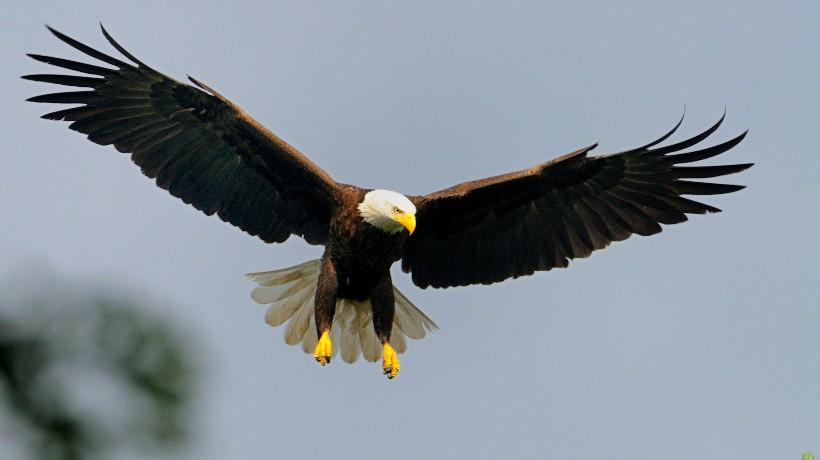
General Information
One of the most famous birds in the world is the bald eagle, which is the national symbol of the United States. Although this bird is a modern animal living in the Quaternary Cenozoic, the bald eagle has many of the features of dinosaurs, so systems biology often identifies it with this clade. The typical ranges of the bald eagle are represented by Canada, the United States, and northern Mexico. The bird lives directly near bodies of water and requires wooded areas to build a nest. The bird is a typical raptor with an excellent vision: the diet of the eagle includes tiny fish and rodent animals. The eagle is able to fly, and it is from the air that the animal manages to notice its prey and dive down sharply. An interesting fact is that bald eagles are monogamous animals, which means that it is not typical for birds to have multiple partners.
Skull structure
The distinctive feature of the bald eagle is a prominent beak and bony growth in the superciliary area, which often makes the bird seem aggressive or severe. The beak is rigidly fused with the supracranial formations, as there are two nostril openings immediately at the end of the beak. The eagle’s cranial box is formed by hard, heavy bones. The postorbital opening in the skull is broad and rounded: consequently, the eagle has less space allocated under the masseter muscles and more under the frontal lobe of the brain. The eyeballs are not split apart but are brought down to the nose: therefore, the bird can look not only to the sides but also see objects in front of and underneath it.
Structure of the postcranial skeleton
The total length of the bird does not exceed 120 centimeters, but the wingspan is much more enormous, up to 230 centimeters. The lower extremities of the eagle are colored by the beak, and they are developed in the typical pattern of birds: three toes put forward and one opposing them; each of them ends with an extended claw. Interestingly, the forefingers form a powerful grip that allows the bird to hold its prey while the rear claw pierces the victim’s vital organs. The tail is comparatively short and has wedge-shaped plumage.